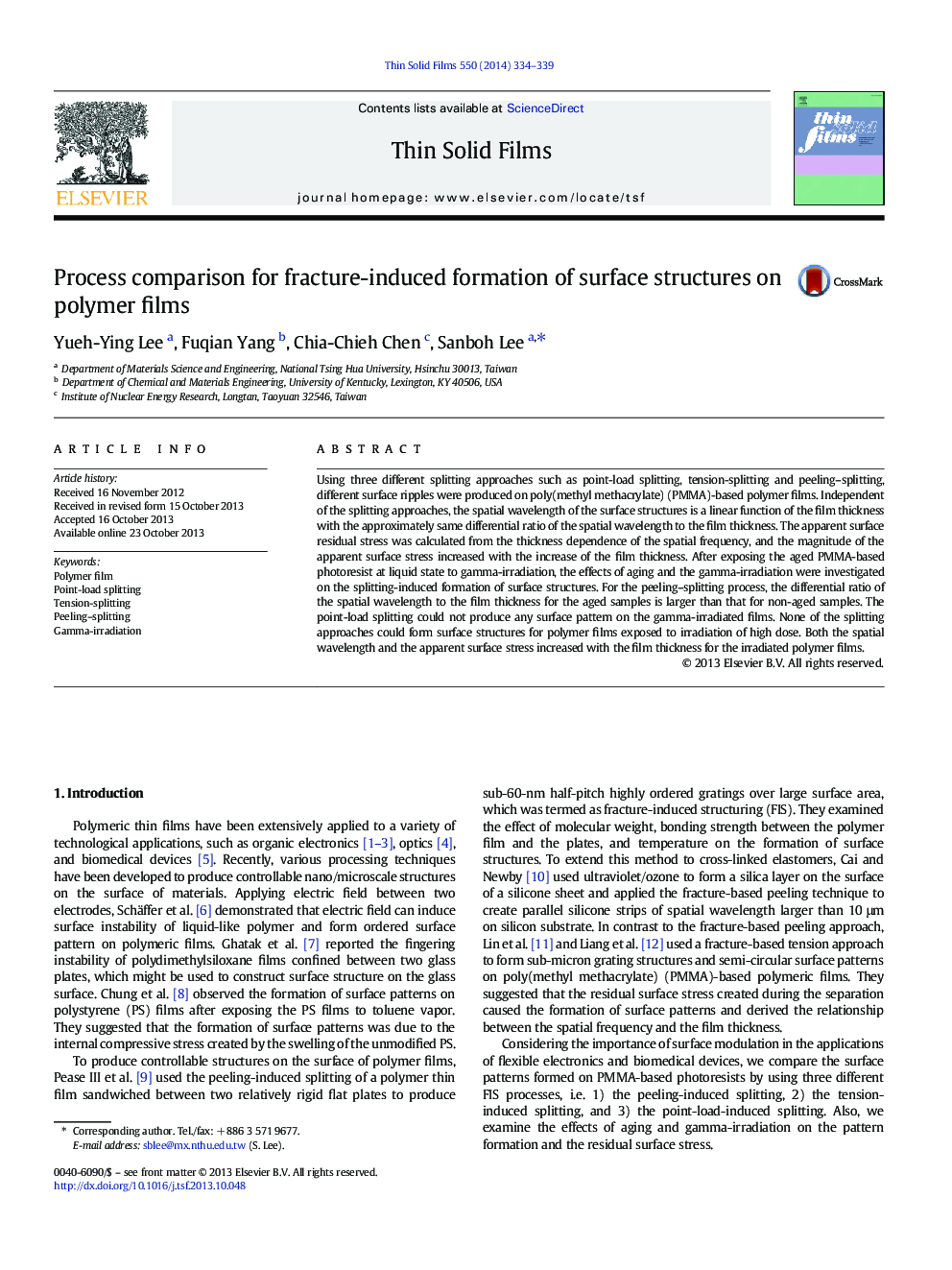| Article ID | Journal | Published Year | Pages | File Type |
|---|---|---|---|---|
| 8035544 | Thin Solid Films | 2014 | 6 Pages |
Abstract
Using three different splitting approaches such as point-load splitting, tension-splitting and peeling-splitting, different surface ripples were produced on poly(methyl methacrylate) (PMMA)-based polymer films. Independent of the splitting approaches, the spatial wavelength of the surface structures is a linear function of the film thickness with the approximately same differential ratio of the spatial wavelength to the film thickness. The apparent surface residual stress was calculated from the thickness dependence of the spatial frequency, and the magnitude of the apparent surface stress increased with the increase of the film thickness. After exposing the aged PMMA-based photoresist at liquid state to gamma-irradiation, the effects of aging and the gamma-irradiation were investigated on the splitting-induced formation of surface structures. For the peeling-splitting process, the differential ratio of the spatial wavelength to the film thickness for the aged samples is larger than that for non-aged samples. The point-load splitting could not produce any surface pattern on the gamma-irradiated films. None of the splitting approaches could form surface structures for polymer films exposed to irradiation of high dose. Both the spatial wavelength and the apparent surface stress increased with the film thickness for the irradiated polymer films.
Keywords
Related Topics
Physical Sciences and Engineering
Materials Science
Nanotechnology
Authors
Yueh-Ying Lee, Fuqian Yang, Chia-Chieh Chen, Sanboh Lee,
